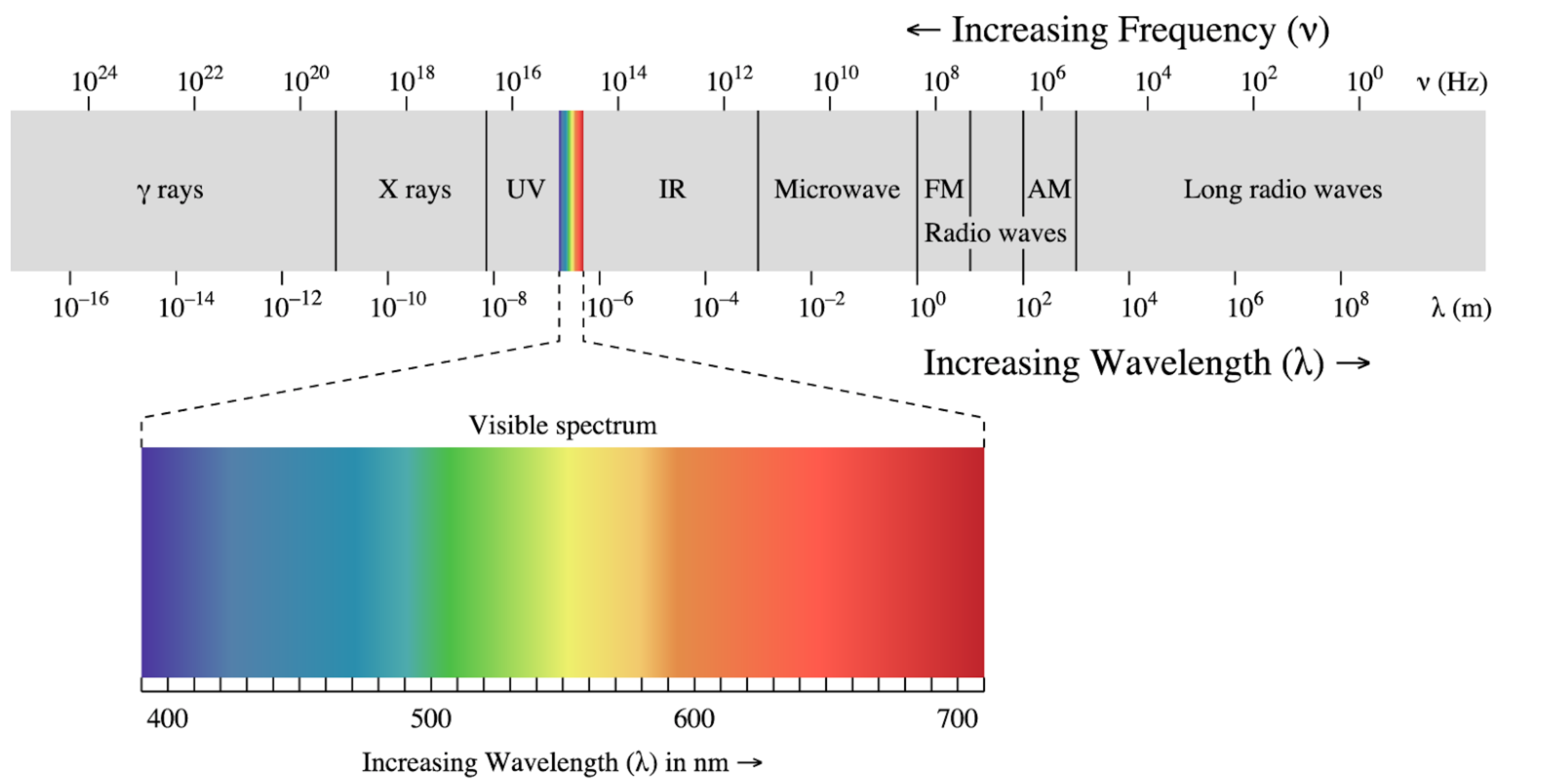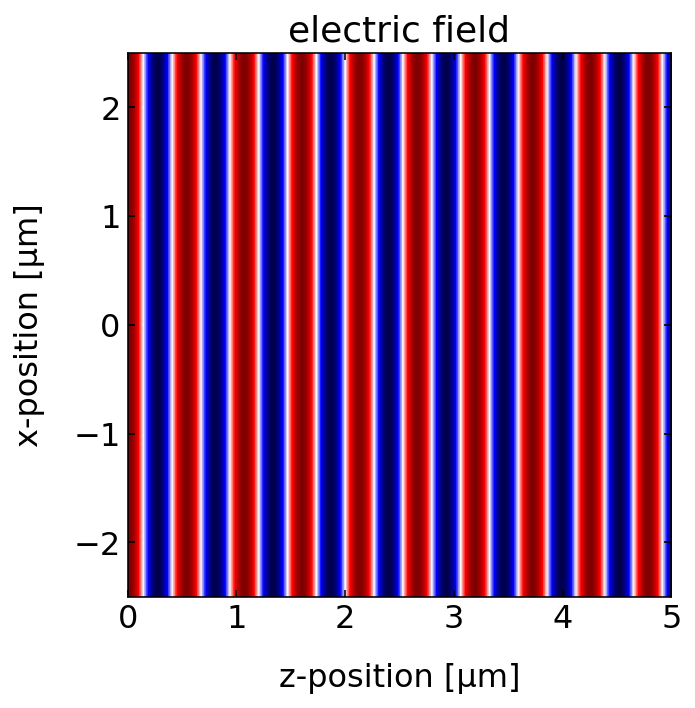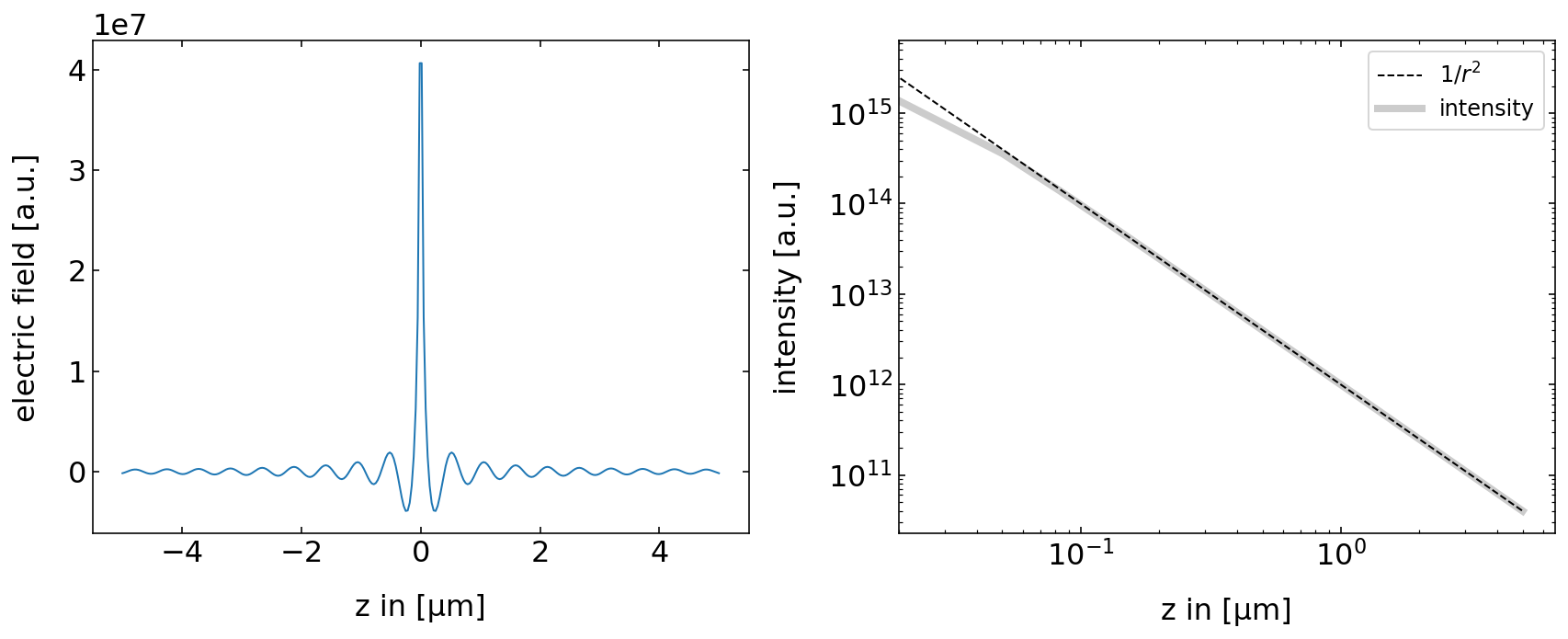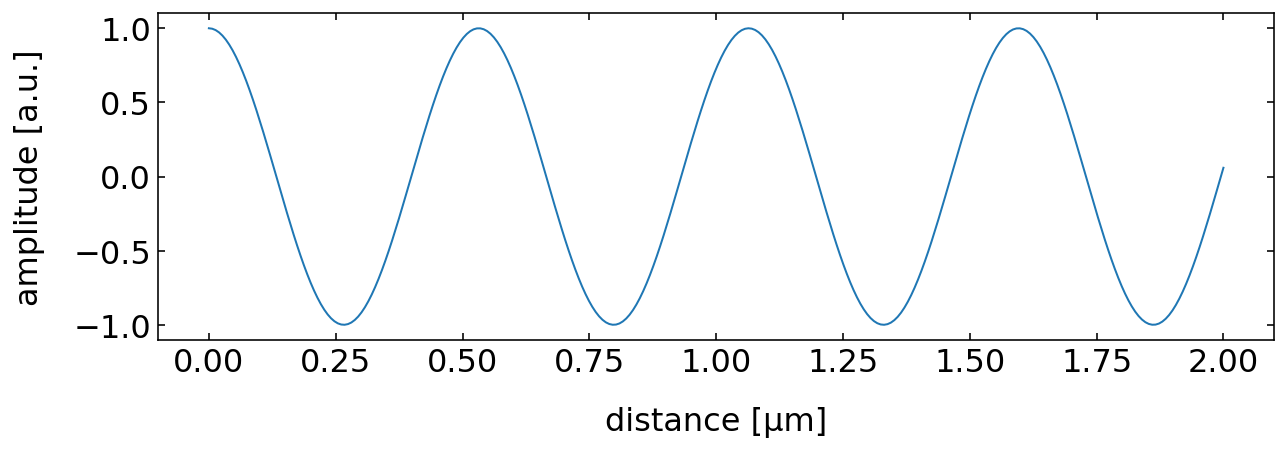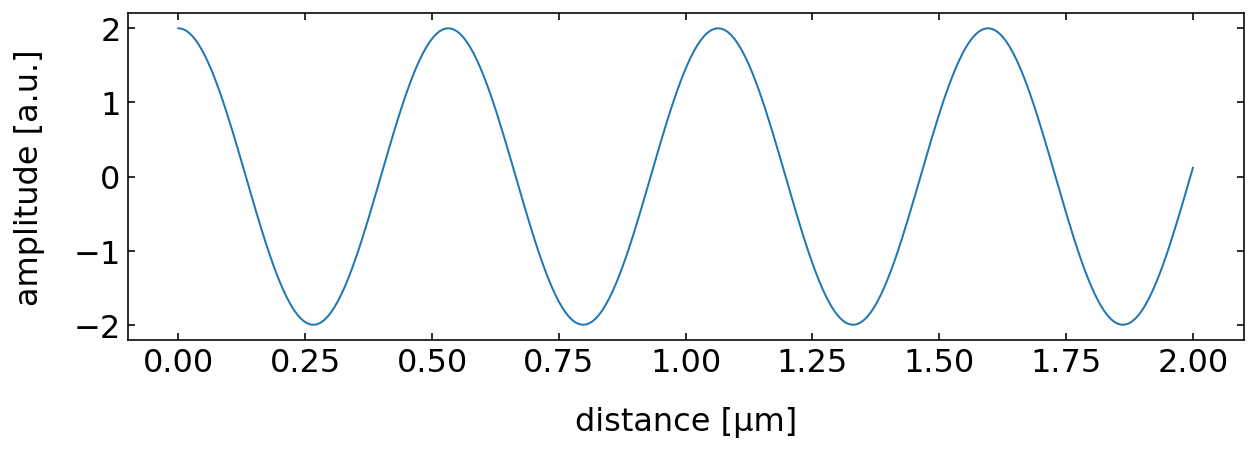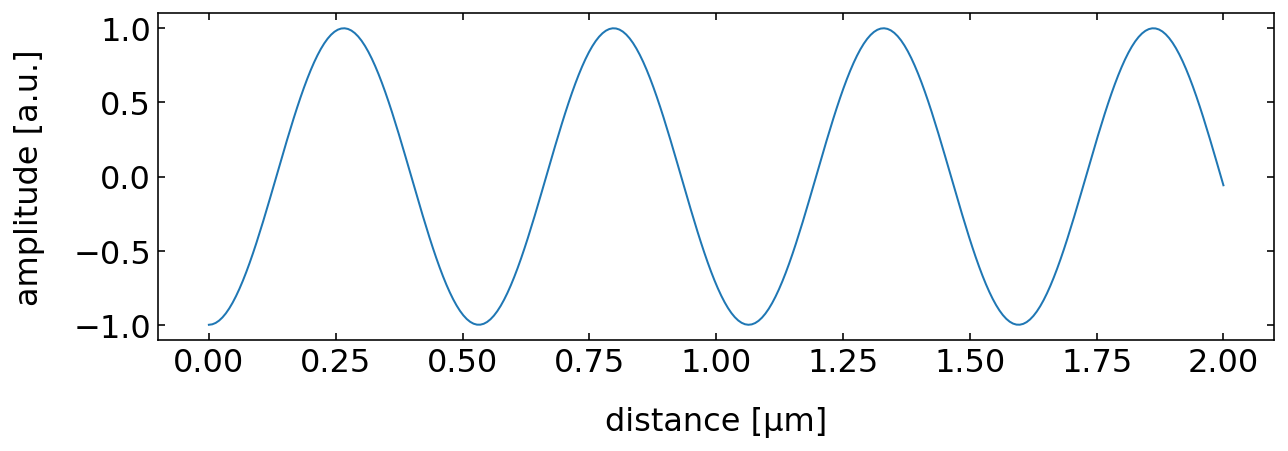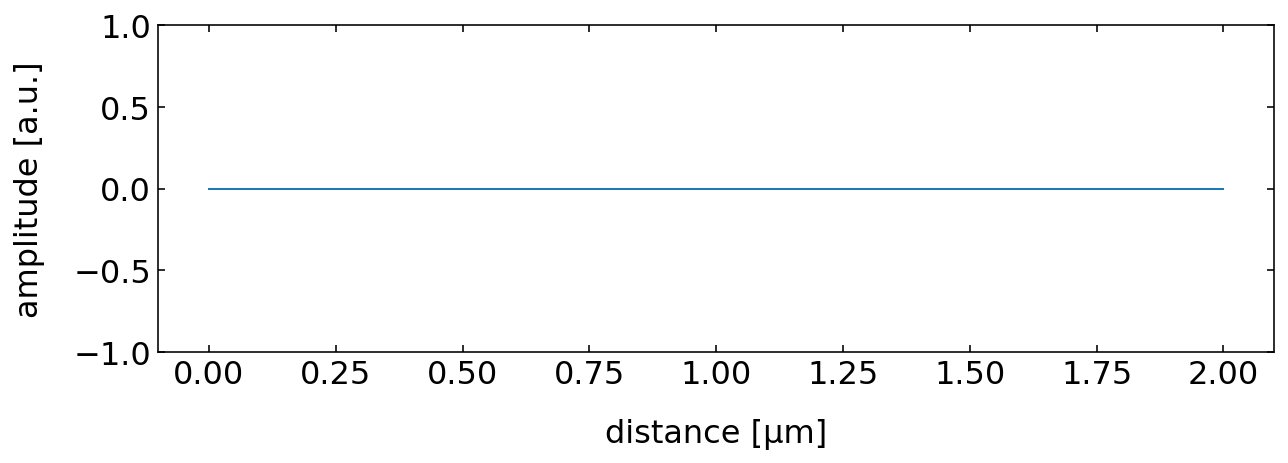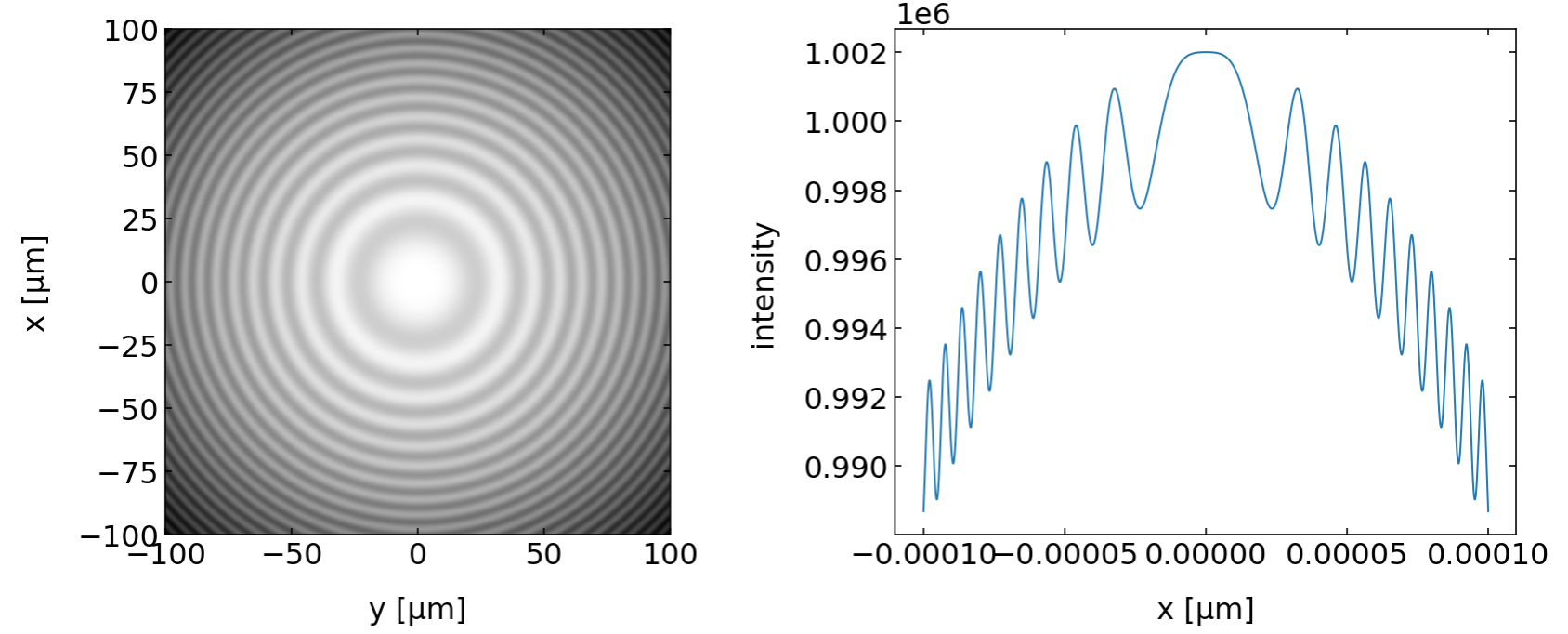This page was generated from `/home/lectures/exp3/source/notebooks/L6/Wave Optics.ipynb`_.
Wave Optics¶
Wave optics extends our insight into optics with the help of a wave description. Light is able to interfere or to be diffracted at edges and it reveals specific colors in the visible range, where are not able to take account of that with the help of geometrical optics. The spectrum of electromagnetic waves extends over a huge range of frequencies and only a tiny fraction of it is related to the visible region.
|
|---|
Fig.: Electromagnetic Spectrum with its different regions. |
In the following, we would like to introduce wave by discarding the fact, that light is related to electric and magnetic fields. This is useful as the vectorial nature of the electric and magnetic field further complicates the calculations, but we do not need those yet. Accordingly we also do not understand how light really interacts with matter and we therefore have to introduce some postulates as well.
Postulates of Wave Optics¶
A wave corresponds to a physical quantity which oscillates in space and time. Its energy current density is related to the square magnitude of the amplitude.
Wave equation¶
where
is the Laplace operator. The wave equation is a linear differential equation, which means that the superposition principle is valid. This means, that if we have found two solution
Intensity of waves¶
which is given in units
The optical power of a wave is obtained when integrating the intensity over an area
Monochromatic wave¶
A monochromatic wave is obtained whem only one single frequency
where
|
|---|
Fig.: Representation of a wavefunction over time (constant position) denoting the phase |
Complex Amplitude¶
We may also introduce a complex representation of a wave by
which is called the complex wavefunction.
|
|---|
Fig.: Phasor diagram of the complex amplitude |
A phasor displays the complex amplitude with magnitude and phase as a vector in the complex plane.
This complex wavefunction is related to the real wavefunction by
but allows us much easier calculations. In the same way as for real wavefunction we may now also write a wave equation for the complex wavefunction
We may now further split up the complex wavefunction into a spatial and temporal dependence
where
The quantity
Wavefronts¶
Wavefronts are the surfaces in space where the phase
Plane Waves¶
A plane wave is a solution of the homogeneous wave equation and is given in its complex form by
where the two exponentials contain an spatial and a temporal phase.
The spatial amplitude of the plane wave is given by
The propagation direction of the wave is defined by wavevector
|
|---|
Fig.: Plane wave propagating along the horizontal direction. |
The wavevector is also proportional to the momentum of the wave, which will be important if we consider the refraction process a bit later. The magnitude of the wavevector is related wo the frequency
This relation connects the momentum (
If we consider a wave propagating in a medium, the frequency of the wave
and by a factor lower (the refractive index
Correspondingly. The wavenumber gets larger,
.
The above graph shows a static snapshot of the plane wave at a time
Fig.: . Propagating spherical waves for positive and negative wavenumber. |
A reversal of the wavevector to its negative value, changes the propagation direction to the opposite direction.
Spherical Waves¶
A spherical wave is as well described by two exponentials containing the spatial and temporal dependence of the wave. The only difference is, that the wavefronts shall describe spheres instead of planes. We therefore need
Note that we have to introduce an additional scaling of the amplitude with the inverse distance of the source. This is due to energy conservation, as we require that all the energy that flows through all spheres around the source is constant.
The line plots below show that the field amplitude rapidly decays and the intensity follows a
|
|---|
Fig.: Spherical wave amplitude and intensity of the spherical wave as a function of distance from the source. |
We can also visualize the animation our spherical wave to check for the direction of the wave propagation.
|
|---|
Fig.: . Propagating spherical waves for positive and negative wavenumber. |
Interference¶
Interference is one of the most important phenomena in physics. It is a realization of the superposition principle which is valid, if the differential equation which produce the solutions is linear as we already stated above.
Let’s assume we have two solutions of the wave equation
To calculate the intensity of the total wave, we have to calculate therfore the magnitude square of the sum of the two waves.
which results in two terms, which resemble to be the sum of the two waves. Yet, there are two additional cross-term, which say that the resulting intensity is not just the sum of the two intensities in case the two terms do not cancel out.
If we use
we can express the individual waves as
and
where the exponential term with
with
which now clearly tells us, that the total intensity of two waves in not the sum of the two intensities, but contains an additional term, which depends on the phase difference between the two wave. This term
Let us assume for an example two wave, which originally have the same intensity, i.e.
This is quite interesting as we obtain the follwing results for specific phase shifts
Contructive Interference
|
|---|
Fig.: Constructive interference of two wave (left, middle) and the sumn of the two wave amplitudes. |
Constructive Interference
Constructive interference between wave occurs when the phase difference between the waves is a multiple of
where
Destructive Interference
|
|---|
Fig.: Destructive interference of two wave (left, middle) and the sumn of the two wave amplitudes. |
Destructive Interference
Destructive interference between wave occurs when the phase difference between the waves is an odd multiple of
where
Sum of both Intensities
Phase Difference and Path Difference
Note that a phase difference can be caused by a difference in the path length the two waves have to travel. This pathlength difference
Interference may give rise to distinct patterns in space, which can be used for lithography purposes, for example. If we superpose two plane waves with different directions of the wave propagation, we will in general obtain a stripe like intensity pattern as depicted below.
|
|---|
Fig.: Interference of two plane waves propagating under an angle of 45 |
The interference of the two plane wave shown above leads also to stripe pattern on a screen (think of the intensity pattern at z=10 µm for example).
If we use a spherical and a plane wave, we will find a circular shaped interference intensity due to the curvature of the wavefronts of the spherical wave.
|
|---|
Fig.: Interference of a spherical wave and a plane wave (left amplitude, right intensity). |

